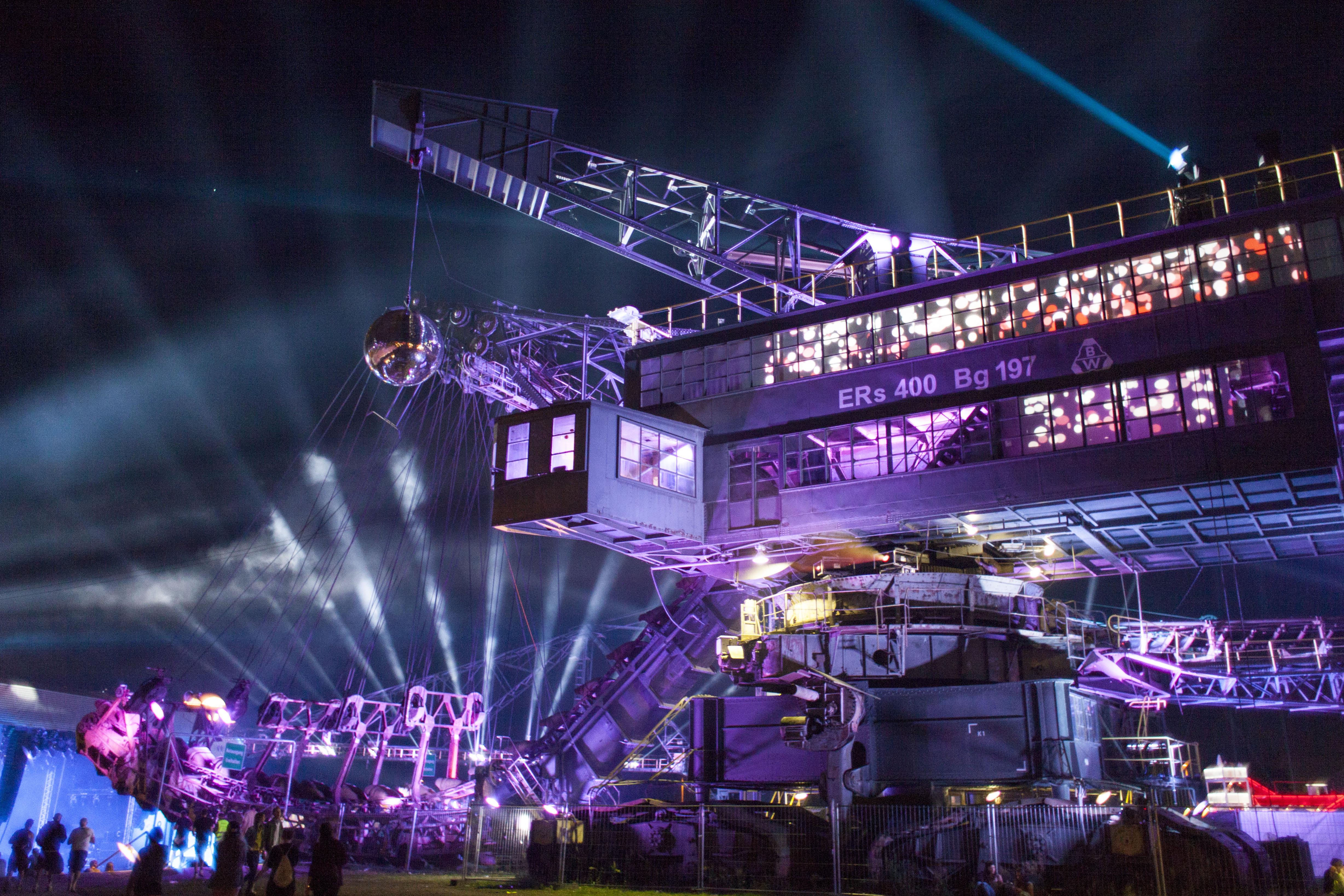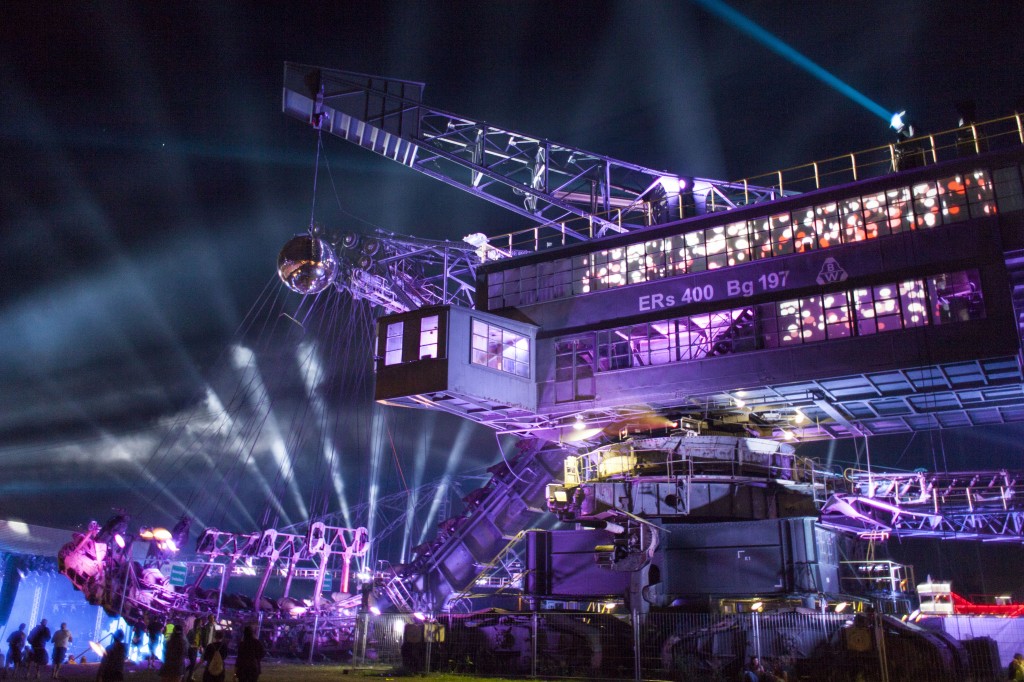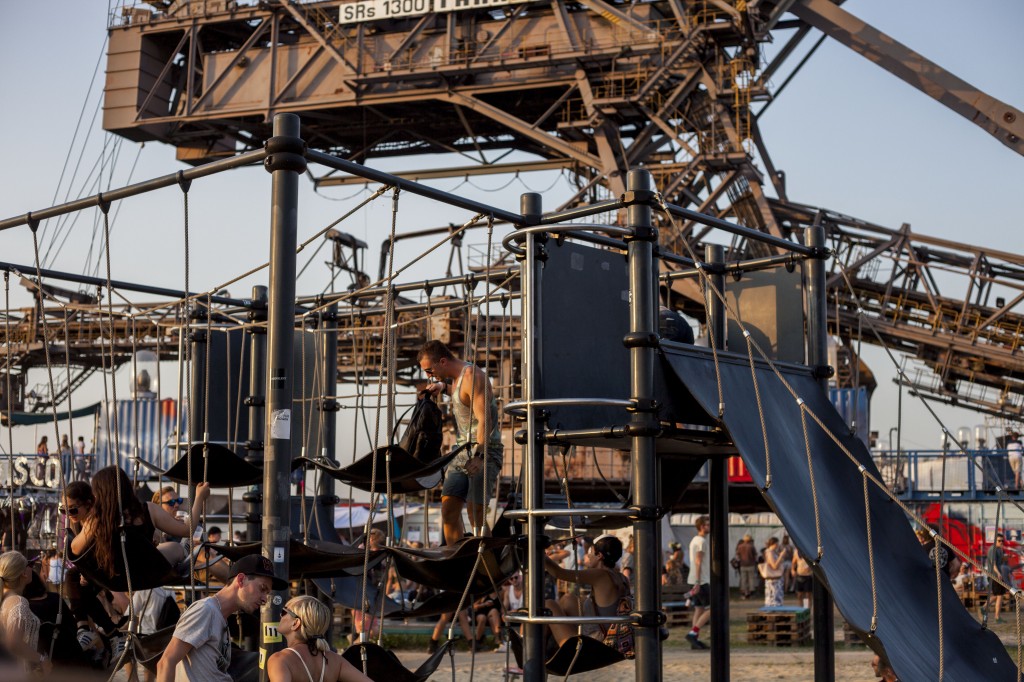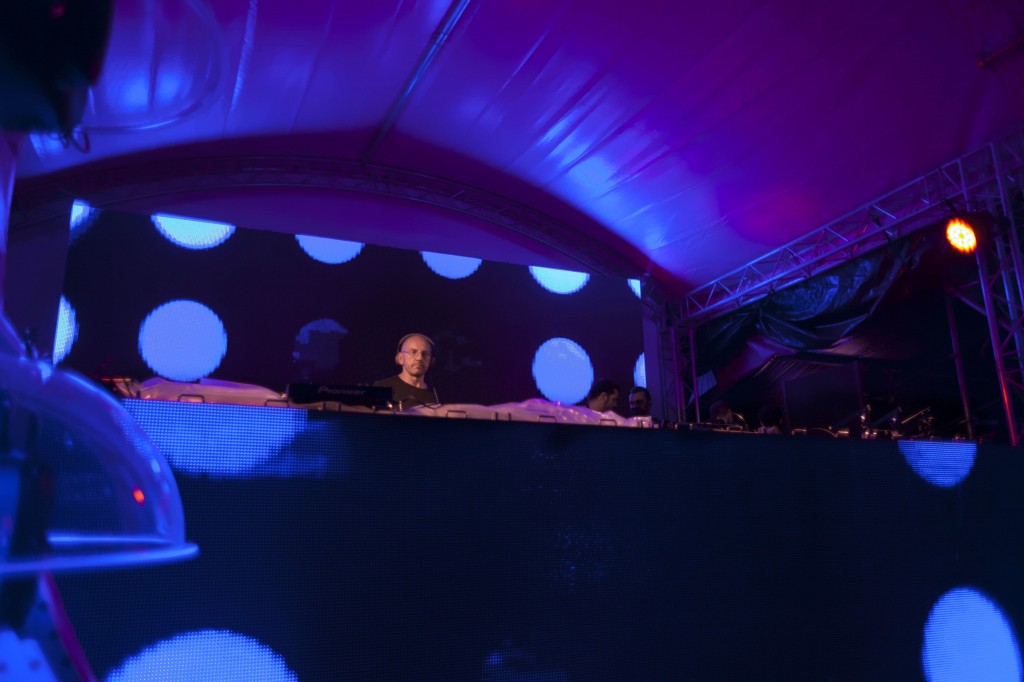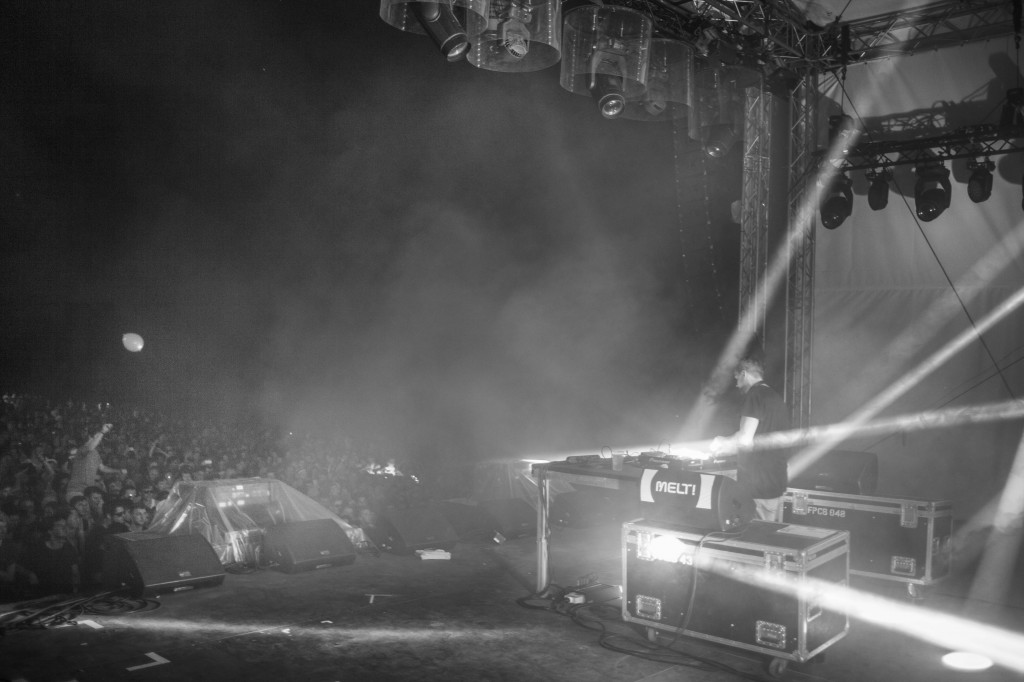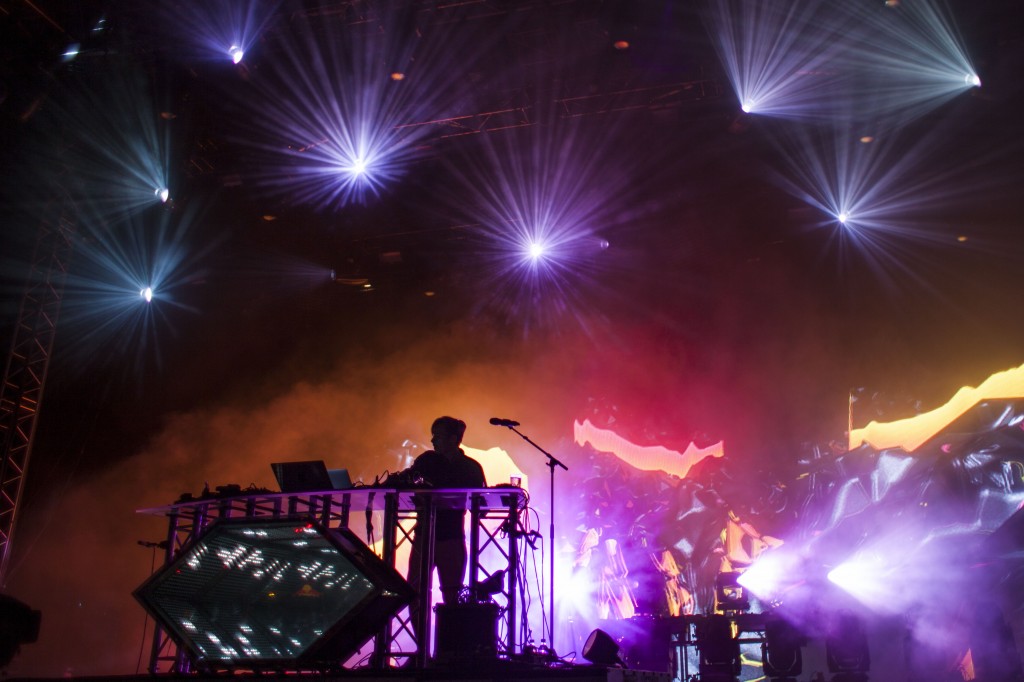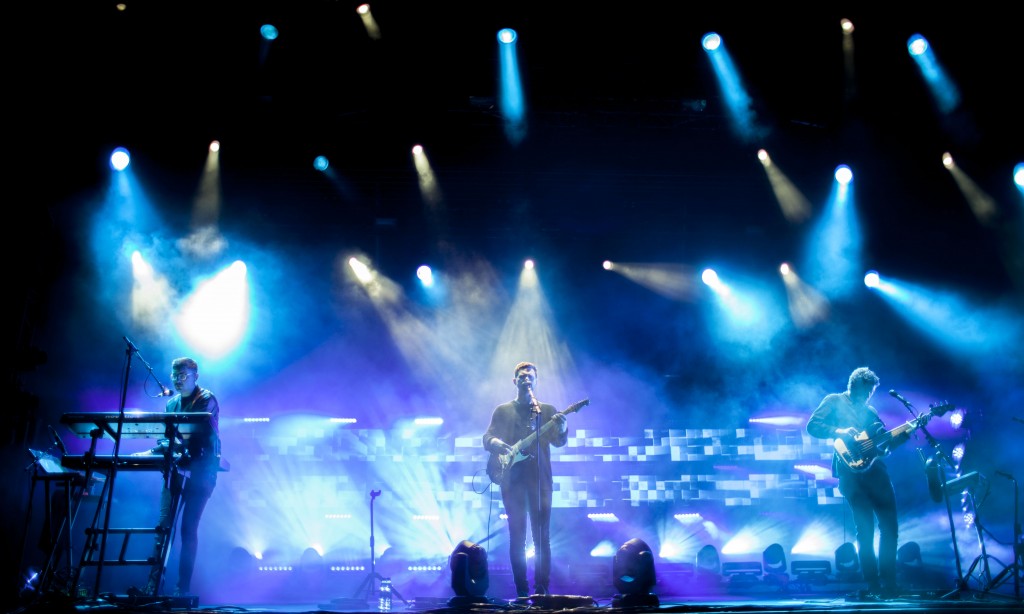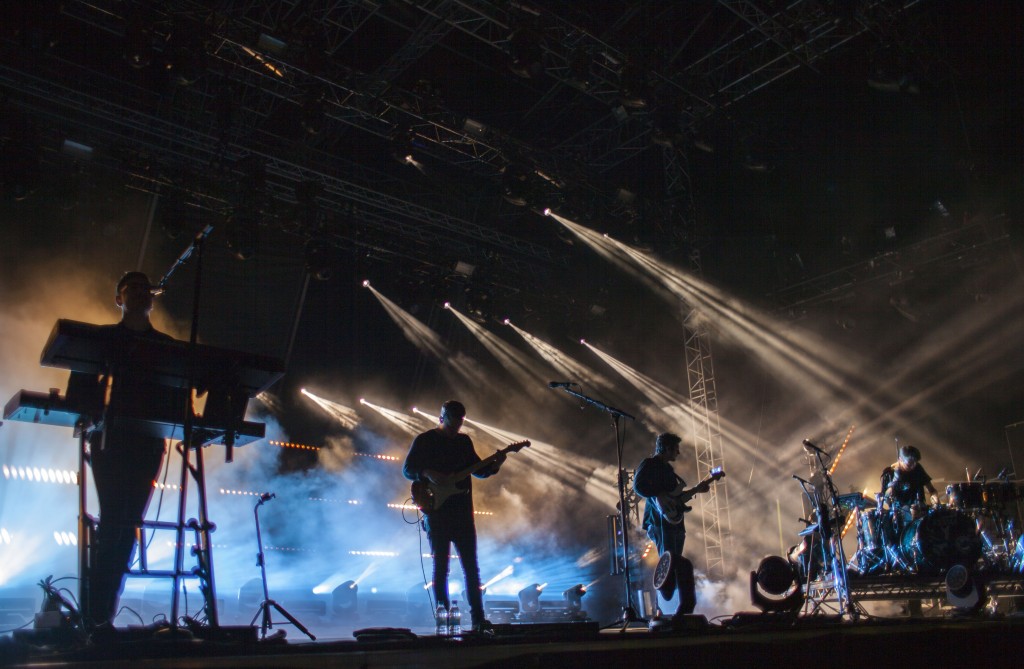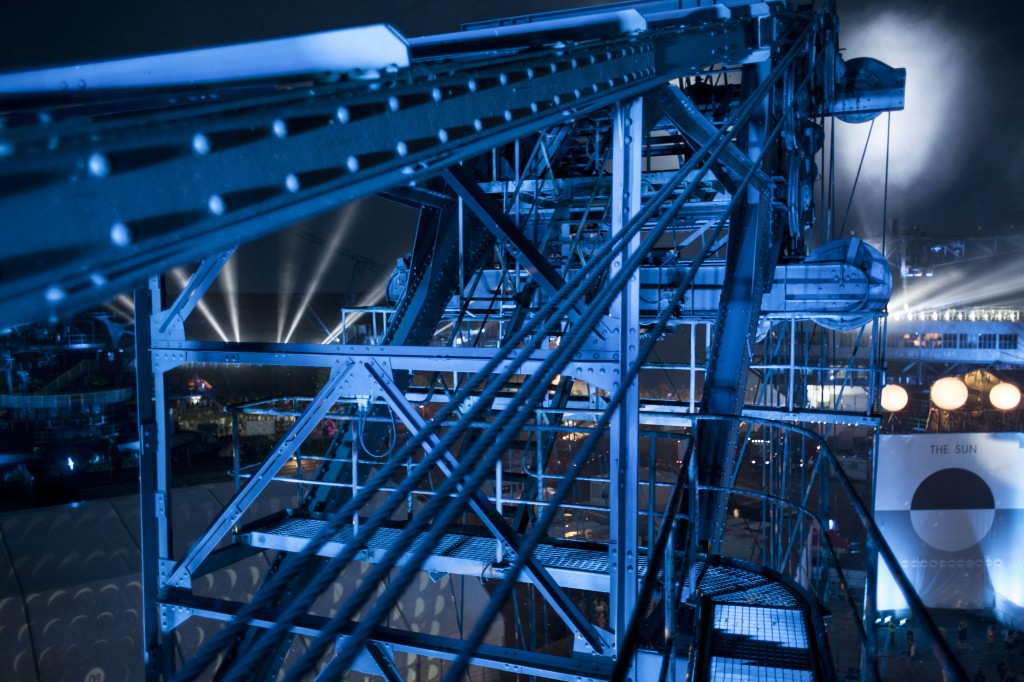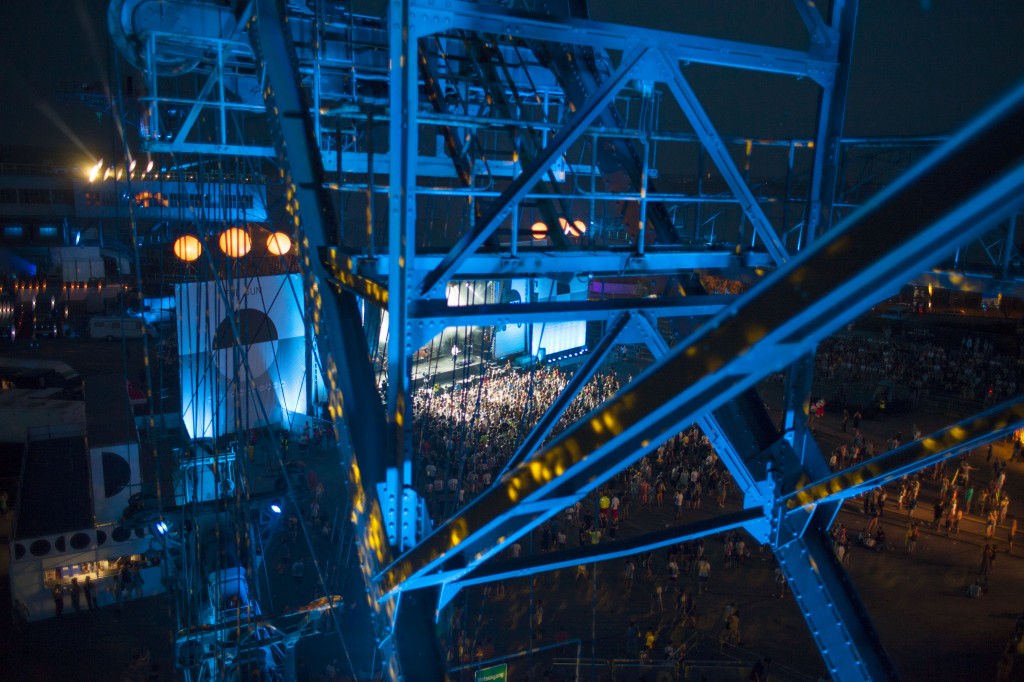Two hours Southwest of Berlin lies the vacant East German mining monument Ferropolis, a ‘city of iron’ that holds the abandoned industrial machinery of Gräfenhainichen. Here, 2,000 tonne machines tower over the Gremminer See, a lake which laps at murky beaches on three sides and was created as the result of the coal extraction – for every bucket of brown coal workers pulled up, they also brought six buckets of water. At their operational peak these behemoths extracted 100 million tonnes coal each year throughout 20 mine shafts excavated by 60,000 mine workers.
After four decades of unbridled industrial power and devastating environmental excavation in the Golpa-Nord strip mine, the wall fell and the German brown coal industry collapsed. By ’91 the mines were abandoned. And then this Summer it became home to heavy sound systems and DJs. For some, like Sven Väth and Ellen Allien, the reclaiming of abandoned East German industrial spaces mirrored their own beginnings in Berlin’s early Techno clubs such as E-Werk and Tresor. But the new school was present as well with late night sets from the likes of Nina Kraviz, and the genres varied far past Techno to include Alt-J, ODESZA, Tove Lo and more.
Melt! Festival was host to 20,000 dancing maniacs as well, scattered across six stages that ranged from afternoon sets on the beach, to a grassy lawn stage overlooking a small forest, to the Sleepless Floor with marathon sets from Ellen Allien and Pete Tong. The festival is a crossroads of beautiful scenery and industrial wasteland, pop singers and grim Techno, immense speaker systems and sunrise sets.
Past the playground with the spinning sand dump trucks at the far end of the festival grounds by the forest, the Big Wheel Stage was host to two major headliners during the weekend that outlined two very different styles of mixing: Sven Väth and Nina Kraviz. Väth has more than three decades of experience behind the decks and has arguably been the largest German Techno DJ during that time, founding the hugely influential clubs Omen and Cocoon. He’s a two deck vinyl purist and is one of the core cultivators of the German and Ibiza Techno scenes. Playing in his home country, he his set could have been the largest. But it wasn’t. The biggest crowd at that stage, a thoroughly packed one despite the depth of space, was during the set of a much younger DJ from Russia by the name of Nina Kraviz. Germany’s Techno scene is one that gives a lot of gravity to the well-established DJ and is almost entirely men, yet it was a young, Russian DJ that dominated – why?
Because she played great music. Her blend of Techno and House with an Acidy kick is a popular sound at the moment and she played it extremely well. But there was a notable difference other than the records themselves, and its one that’s drawn a lot of controversy: how to deal with the balance between performer and musician. While Väth sternly fiddled with knobs, rarely smiling, Kraviz bounced around in her backwards cap, holding up LP Covers as she dropped in new records. Being an attractive woman she’s drawn a fair bit of potentially sexist criticism for this, but this approach to performance can and should be independent of gender.
In the early days of the Berlin Techno there were no rock show stages and the DJ could focus solely on the music. In their book Der Klang der Familie, Felix Denk and Sven von Thuelen described it as a scene without a center or performer: “The human disappeared in the tracks; the artist subject dissolved in the circuitry of the drum machine, the binary codes of the sampler and the ever-changing project names of the producers. At the beginning, even the DJ was part of the party, not its focus or star. The star was the party itself.” Today there seems to be a trend among many headliner DJs to over-emphasize the fist-pumping performance aspect and disregard the mix, but despite the negative aspects of this the fact remains that DJs are on elevated, illuminated stages now and the audience will take cues from their mood. Kraviz found a way to make people connect to her while still being attentive to the mixer, and in the end all that matters is she got everybody dancing.
Following Kraviz’s set, at 2am Monday morning all the stages switched off but for one. Ellen Allien took the stage for a four hour set on the Sleepless Stage where speakers enclosed the dance floor from four corners. The swelling crowd filled far beyond that and what was normally the dancefloor became an inner pit of thudding hard Techno and debauchery, boys dancing half naked on speaker boxes. And after all it’s the dancing that matters.
See you on the dancefloor,
Jesse Wheaton
All photos by Jesse Wheaton
